St Christopher's Home for Boys / Girls, Hunstanton, Norfolk
The St Christopher's Home for Boys was opened by the Waifs and Strays Society in 1895. It was originally located in Primrose Cottage on Victoria Avenue, Hunstanton, and was then referred to as the Hunstanton Cottage Home. The matron (or foster-mother) was Mrs Sharrod.

Matron, chaplain and some of the inmates of Hunstanton Cottage Home, c.1896. © Peter Higginbotham
In 1901, the matron was Mrs Clara Beaumont, with 11 boys in residence aged from 7 to 13, Lack of space in the cottage led to the construction in 1906-7 of a much larger house on Cromer Road. A foundation stone was laid on 9th October, 1906, by the Suffragan Bishop of Thetford.

St Christopher's Home for Boys foundation stone, Hunstanton, 2016. © Peter Higginbotham
The new building was officially opened on April 16th, 1907, by Mrs Seymour who unlocked the door and said, "I declare this Home of St. Christopher, built for the glory of God and the use of His children, to be now open." The Bishop, standing on the threshold, then said, "0 Lord, protect this house," and those present recited the 67th Psalm, followed by the antiphon, "O Lord, protect this house, and let Thy holy angels guard it, and drive all evil from it." Then followed the prayer:—
Visit, we pray Thee, 0 Lord, this dwelling, and drive far from it the snares of the enemy, May Thy holy angels dwell within it to preserve its inmates in peace, and may Thy blessing rest upon them always, through Jesus Christ our Lord. Amen.
An additional wing for the building was opened on July 21st, 1907. The building could then accommodate 30 boys aged from 7 to 12.
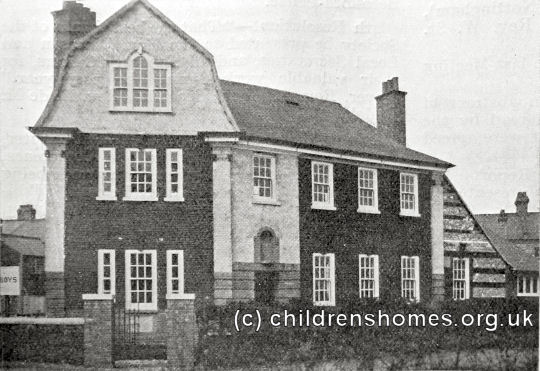
St Christopher's Home for Boys, Hunstanton, c.1907. © Peter Higginbotham
The first residents of the new home were the twelve boys who had previously been living in Primrose Cottage.
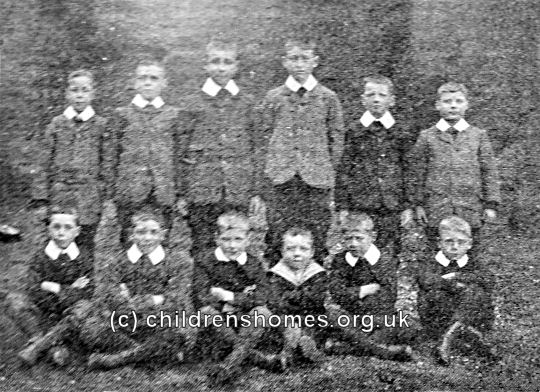
First residents at St Christopher's Home for Boys, Hunstanton, c.1907. © Peter Higginbotham
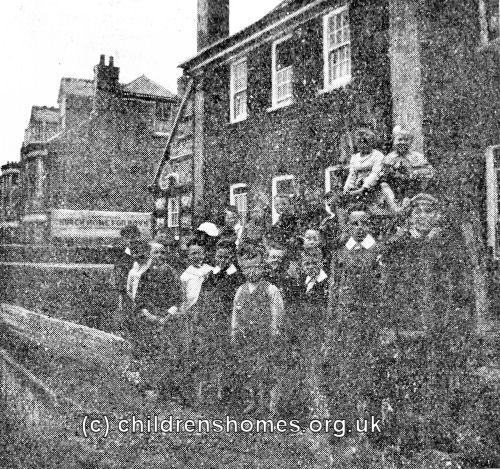
St Christopher's Home for Boys, Hunstanton, c.1907. © Peter Higginbotham
The St Christopher's boys made a significant contribution to the local church choir.
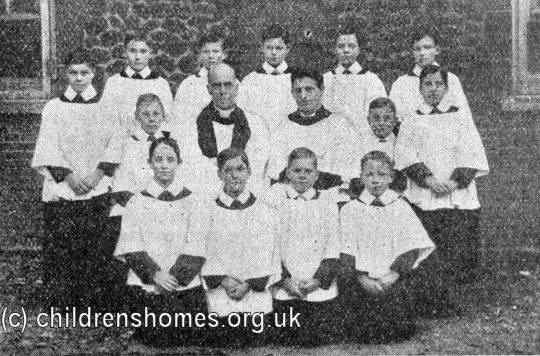
Choristers at St Christopher's Home for Boys, Hunstanton, c.1907. © Peter Higginbotham
In September, 1924, the home was closed in preparation for its conversion to a girls' home. It seems that in a seaside resort such as Hunstanton, the local employment prospects for those leaving the home were judged to be better for girls than for boys, and training was introduced relating to the tourist industry. Amongst the changes to the property was the construction of a laundry which was needed as part of the girls' domestic training. The home was re-opened by the Bishop of Thetford on February 25th 1925.
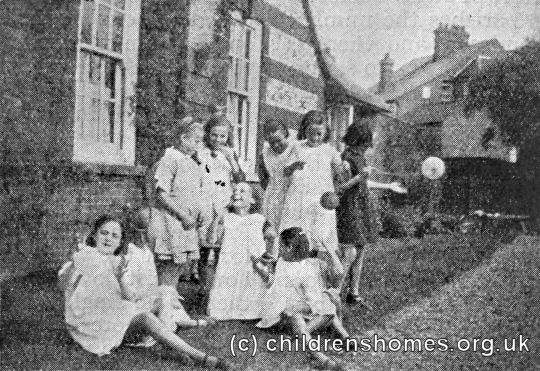
St Christopher's Home for Girls, Hunstanton, c.1927. © Peter Higginbotham
In 1925, the Hunstanton girls visited the royal estate at Sandringham. They are pictured below on the steps of York Cottage, where King George VI was born.

Sandringham visit by St Christopher's Home for Girls, Hunstanton, c.1925. © Peter Higginbotham
The experiment was presumably less successful than hoped and, in April 1934, St Christopher's reverted to being a boys' home.

St Christopher's Home for Boys, Hunstanton, c.1934. © Peter Higginbotham
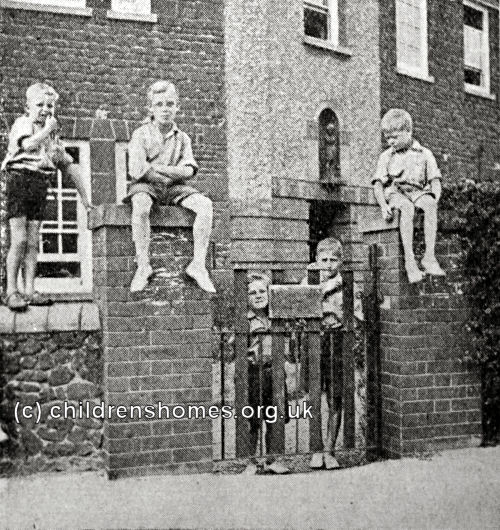
St Christopher's Home for Boys, Hunstanton, c.1934. © Peter Higginbotham

Dining room at St Christopher's Home for Boys, Hunstanton, c.1934. © Peter Higginbotham
Some of the St Christopher's boys contributed to the local church choir.
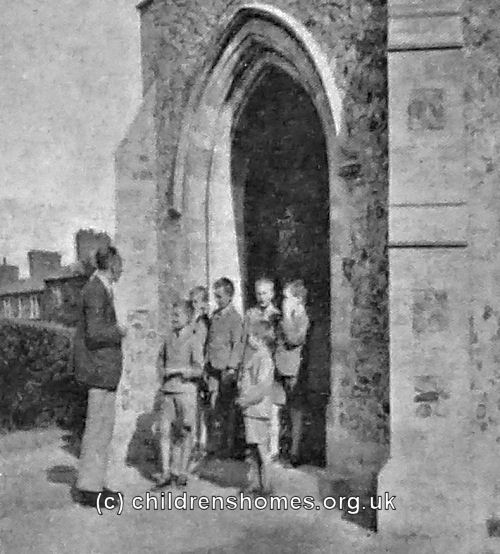
Choir-boys from St Christopher's Home for Boys, Hunstanton, c.1934. © Peter Higginbotham
Boys at the home frequently enjoyed themselves on Hunstanton's sandy beach.

St Christopher's Home for Boys, Hunstanton, c.1934. © Peter Higginbotham
The home finally closed in 1968, seemingly because travel to Hunstanton proved awkward following the closure of its rail link. The remaining residents were transferred to the Society new Flynn House home ta Wakefield.
The Cromer Road property is now in private residential use.

Former St Christopher's Home for Boys, Hunstanton, 2016. © Peter Higginbotham
Records
Note: many repositories impose a closure period of up to 100 years for records identifying individuals. Before travelling a long distance, always check that the records you want to consult will be available.
- Index of the Society's first 30,000 children's case files ordered by surname.
- Index of the Society's first 30,000 children's case files ordered by date of birth.
- The Children's Society Records and Archive Centre is at Unit 25, Springfield House, 5 Tyssen Street, London E8 2LZ (email: archives@childrenssociety.org.uk). Files for children admitted to its homes after September 1926 were microfilmed in the 1980s and the originals destroyed. Some post-1926 files had already been damaged or destroyed during a flood. The Society's Post-Adoption and Care Service provides access to records, information, advice, birth record counselling, tracing and intermediary service for people who were in care or adopted through the Society.
- The Society has produced detailed catalogues of its records relating to disabled children, and of records relating to the Children's Union (a fundraising body mostly supported from the contributions of children).
Bibliography
- Bowder, Bill Children First: a photo-history of England's children in need (1980, Mowbray)
- Church of England Waifs and Strays' Society [Rudolfe, Edward de Montjoie] The First Forty Years: a chronicle of the Church of England Waifs and Strays' Society 1881-1920 (1922, Church of England Waifs and Strays' Society / S.P.C.K.)
- Higginbotham, Peter Children's Homes: A History of Institutional Care for Britain's Young (2017, Pen & Sword)
- Morris, Lester The Violets Are Mine: Tales of an Unwanted Orphan (2011, Xlibris Corporation) — memoir of a boy growing up in several of the Society's homes (Princes Risborough, Ashdon, Hunstanton, Leicester) in the 1940s and 50s.
- Rudolf, Mildred de Montjoie Everybody's Children: the story of the Church of England Children's Society 1921-1948 (1950, OUP)
- Stroud, John Thirteen Penny Stamps: the story of the Church of England Children's Society (Waifs and Strays) from 1881 to the 1970s (1971, Hodder and Stoughton)
Links
- Hidden Lives Revealed — the story of the children who were in the care of The Children's Society in late Victorian and early 20th Century Britain.
- The Children's Society
Except where indicated, this page () © Peter Higginbotham. Contents may not be reproduced without permission.


